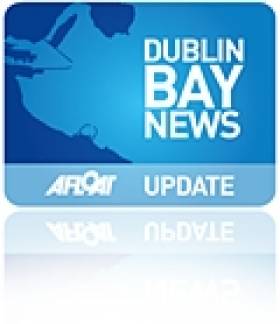Displaying items by tag: East Pier
Councillors Vote To Develop Derelict Dun Laoghaire Baths
The derelict baths site at Dun Laoghaire will be developed following a vote by Councillors to proceed with plans first outlined by Afloat.ie back in April.
The €2.5 million project was given the green light by the Department of the Environment.
The revised plans will see the baths – last used 20 years ago as the Rainbow Rapids – developed into artists' studios with a gallery and café space.
Among other changes, the old saltwater pool space will be filled in to create a green space between the People's Park and the East Pier.
#DunLaoghaire - A section of Dun Laoghaire's East Pier is at risk of structural failure and requires repairs at a cost of up to €5 million, according to an unpublished engineer's report obtained by RTÉ News.
Afloat.ie previously reported on the existence of the report, commissioned by the Dun Laoghaire Harbour Company, which it's been claimed highlights a number of issues across the south Dublin harbour's three main piers.
The biggest of these concerns a 75-metre section of the East Pier where the recently approved 'urban beach' project will be developed in time for the 2016 summer season.
Steel structural beams supporting Berth 1 on the pier are described as being "at risk of corrosion or failure".
The pier will not have to be closed while repairs are made, as the platform jutting out from the main pier into the harbour is still "completely safe", according to harbour master Simon Coate.
But the cost of repairs is expected to be anywhere between €1 million and €5 million.
RTÉ News has more on the story HERE.
Contributions Wanted for Maritime Museum Ahead of Re-Opening
#NEWS UPDATE - The National Maritime Museum is set to re-open in March following extensive renovation work, according to The Irish Times.
As previously reported on Afloat.ie, the museum was 'soft' opened to invited groups in October to showcase the developments.
Located in the Mariners’ Church in Dún Laoghaire Harbour, close to the East Pier, exhibits at the museum previously included various marine artefacts and models, as well as a maritime library.
In addition, the new museum will include a section dedicated to marine wildlife, with exhibits on various birds and fish living around the Irish coast.
Hugh O'Rorke is in charge of the marine life section, and is seeking contributions of objects from the public. For more details contact Hugh at [email protected] or 086 372 4676.
Just One Week To Go Till Red Bull Flugtag
The Red Bull Flugtag celebrates its 100th event in Dun Laoghaire next Sunday, and organisers have posted details for spectators planning to spend the day cheering on those magnificent flying machines!
The site for the free event will open at 12 noon, with the show taking place from 1pm till 4.30pm. All public access to the event site is via Dun Laoghaire Harbour/East Pier beside the National Yacht Club (the viewing area for those with disabilities is on Carlisle Pier beside the Royal St George).
There are a number of road diversions and parking restrictions to be aware of, full details of which are listed HERE. Temporary signage will advise motorists of impending diversions, and there is ample parking available at the Pavilion, Bloomfields and the IMC cinemas.
Visitors can also arrive by public transport, with bus routes 7, 7a, 46a, 75 and 111 all running to Dun Laoghaire. DART services will also run every 30 minutes and extra capacity will be provided.
The organisers wish to remind all spectators that the Red Bull Flugtag is a family event, and the consumption of alcohol in public will not be permitted.
Watch the world flugtag record being set in Minnesota last year. Maybe a new one will be set in Dun Laoghaire next weekend?


























































